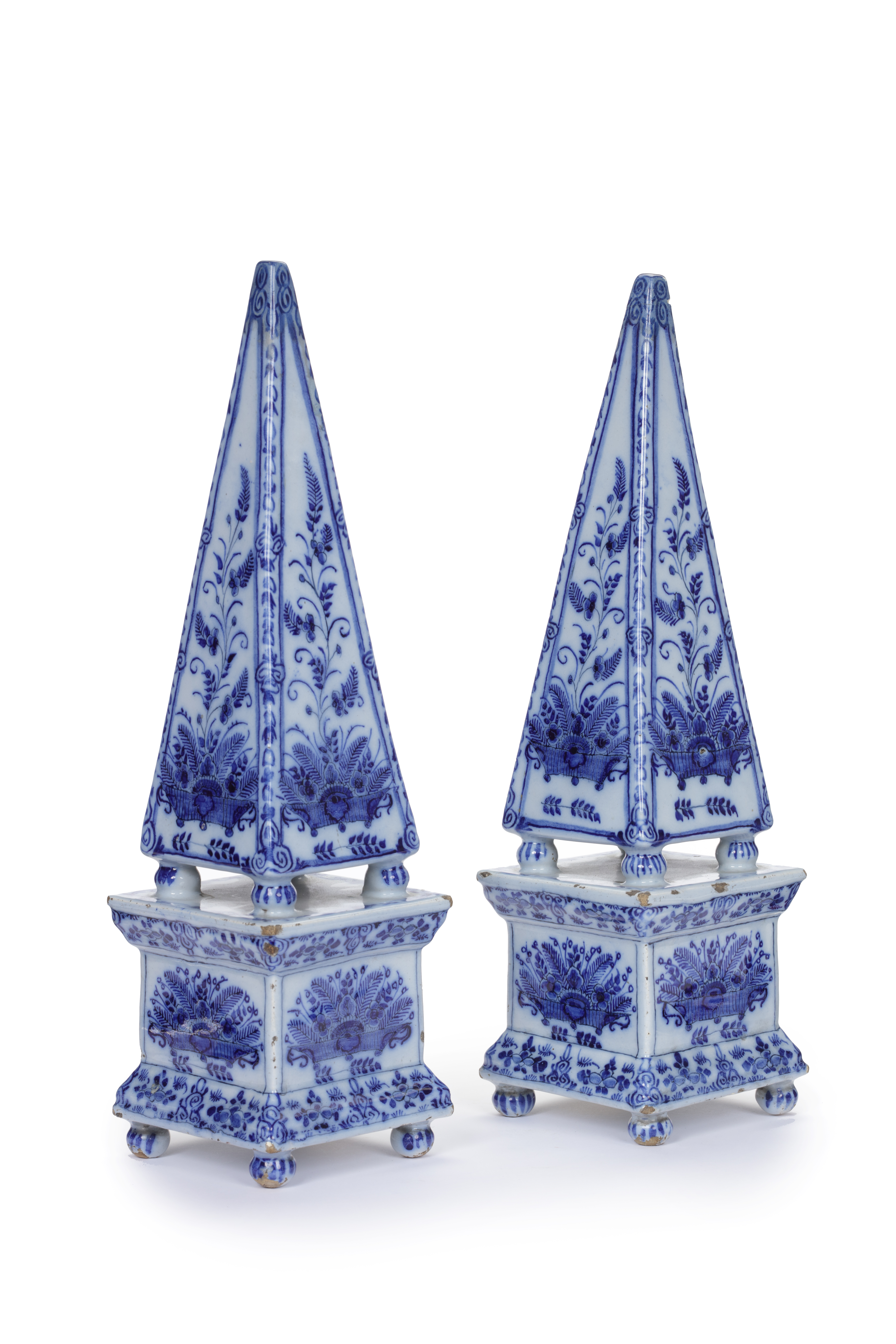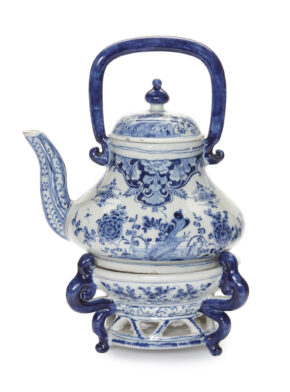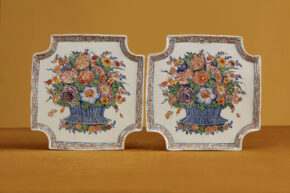[popup_trigger id=”13756″ tag=”span”]![]() [/popup_trigger]
[/popup_trigger]
Images on this website are licensed under a
Creative Commons Attribution-NoDerivs 3.0 Unported License.
OBJECT
• D2212. Pair of Blue and White Obelisks
Delft, circa 1730
Each marked CK for Cornelis Koppens, owner of De Metaale Pot (The Metal Pot) factory from 1724 to 1757
Each painted on the sides of the tapering square body with a basket filled with floral sprigs intersected by bands of floral scrollwork and ruyi heads resting on four peg feet on the architectural square pedestal painted on the sides with a basket filled with floral sprigs in between bands of ruyi heads and budding sprigs, raised on ball feet painted with stiff leaves.
DIMENSIONS
Height: 32.5 cm. (12.8 in.)
PROVENANCE
Swiss Private Collection, Basel
NOTE
The pyramidal form was much in vogue at the end of the seventeenth century. Obelisks, however, were already prominent in the architecture of the ancient Egyptians, and played a vital role in their religion placing them in pairs at the entrance of the temples. In Egyptian mythology, the obelisk symbolized the sun god Ra. After the last pharao Cleopatra’s suicide, Rome seized control of Egypt. The Ancient Romans looted the various temple complexes and seized many obelisks that were shipped out by Rome. The majority were dismantled during the Roman period over 1,700 years ago and the obelisks were sent to different locations. Egyptian obelisks remain a source of fascination, serving as a reminder of past glories and a symbol of state power.
The pyramid or obelisk, traditionally important as a symbol of power and representing the fame and glory of a monarch, was a favorite shape at European courts. During William III’s reign, it was widely used to illustrate Royal authority. For example, the central axis of the garden at Het Loo, the royal palace in Apeldoorn, was designed to lead to a wooden obelisk, and the first triumphal arch erected for William III’s entry into The Hague in 1692 was flanked by pyramids topped with busts of King William and Queen Mary. In light of this tradition, it is not surprising that this shape was not only chosen for decorative ornaments and architectural elements, such as the chimneypieces designed by Daniel Marot (1661-1752), but also for the arrangement of table decorations and particularly flowers, as evidenced by the popular Dutch Delftware pyramidal flower vases of this period belonging to the King and Queen of Holland and Great Britain.
The CK mark has been discussed throughout the years by various scholars; Havard 1909, vol. II, pp. 114- 115 attributed it to Cornelis Aelbregtsz. (de) Keyzer (1668-1680), while De Jonge 1947, p. 222 mentions De Keyzer as working for De Twee Scheepjes (The Two Little Ships) factory, but attributes the CK mark to Cornelis Koppens, the owner of De Metaale Pot (The Metal Pot) factory from 1724 to 1761 (ibid., p. 219). It is no coincidence that by employing the most highly skilled artisans, De Metaale Pot was the most successful factory producing Delftware at that time, exceeding even its significant competitors: De Drie Postelyene Astonne (The Three Porcelain Ash-Barrels), De Paauw (The Peacock) and De Grieksche A (The Greek A) factories.
SIMILAR EXAMPLES
Delftware obelisks were purely decorative, (of which only a dozen are known, unmarked or marked AK for Adrianus Kocx, or LVE as the present one), and were probably made in limited numbers and for special clientele. The 1713 inventory of Het Loo Palace, Apeldoorn, lists two pairs of “pyramids”, as these obelisks were referred to at the time, and fragments of an obelisk (unmarked but attributed to Samuel van Eenhoorn of De Grieksche A (The Greek A) factory), were excavated in 1979 in Queen Mary’s garden adjacent to her cellar dairy at the palace, and illustrated by Erkelens 1996, p. 126, no. 28.









